
SpaceX has a new “in-service” fleet-leader, following Thursday night’s successful rise of the 19-times-flown B1061 Falcon 9 booster at 8:11 p.m. PST from Space Launch Complex (SLC)-4E at Vandenberg Space Force Base, Calif., laden with the tenth batch of Starlink internet communications satellites trucked uphill so far in 2024. After last December’s untimely loss-at-sea of her 19-times-used sister B1058—the one-time ride to space of “Bob and Doug”—B1061 now sits at the top of SpaceX’s pile of active operational Falcon 9 vehicles, one launch ahead of her East Coast-based siblings B1062 and B1060 which each logged their 18th flights in recent weeks. One of the nine Merlin 1D+ engines was making its 22nd launch, making it SpaceX’s current fleet-leader.
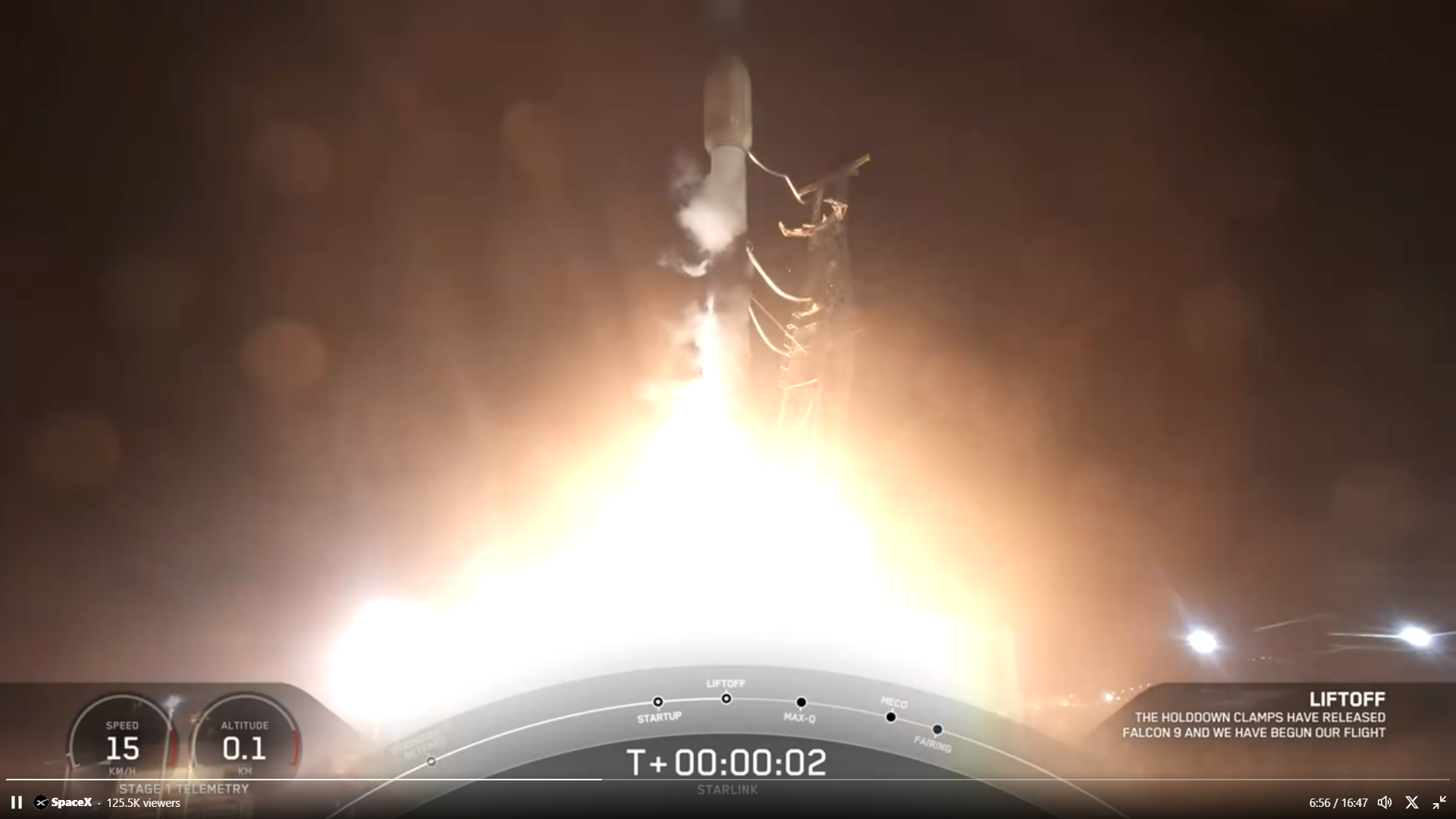
Aboard last night’s mission were 22 Starlinks, bringing to almost 5,900 the total number of these flat-packed internet communications satellites launched on more than 140 Falcon 9 flights since May 2019. Deployment of the stack, which reportedly tips the scales at 38,800 pounds (17,600 kilograms), occurred a little past 62 minutes after launch.
As a network, Starlink enables high-speed and low-latency internet provision to over 70 sovereign nations and international markets in North and South America, Europe, Asia, Oceania and Africa. Landlocked Eswatini—formerly Swaziland—in southern Africa and Honduras and Paraguay joined Starlink in December.
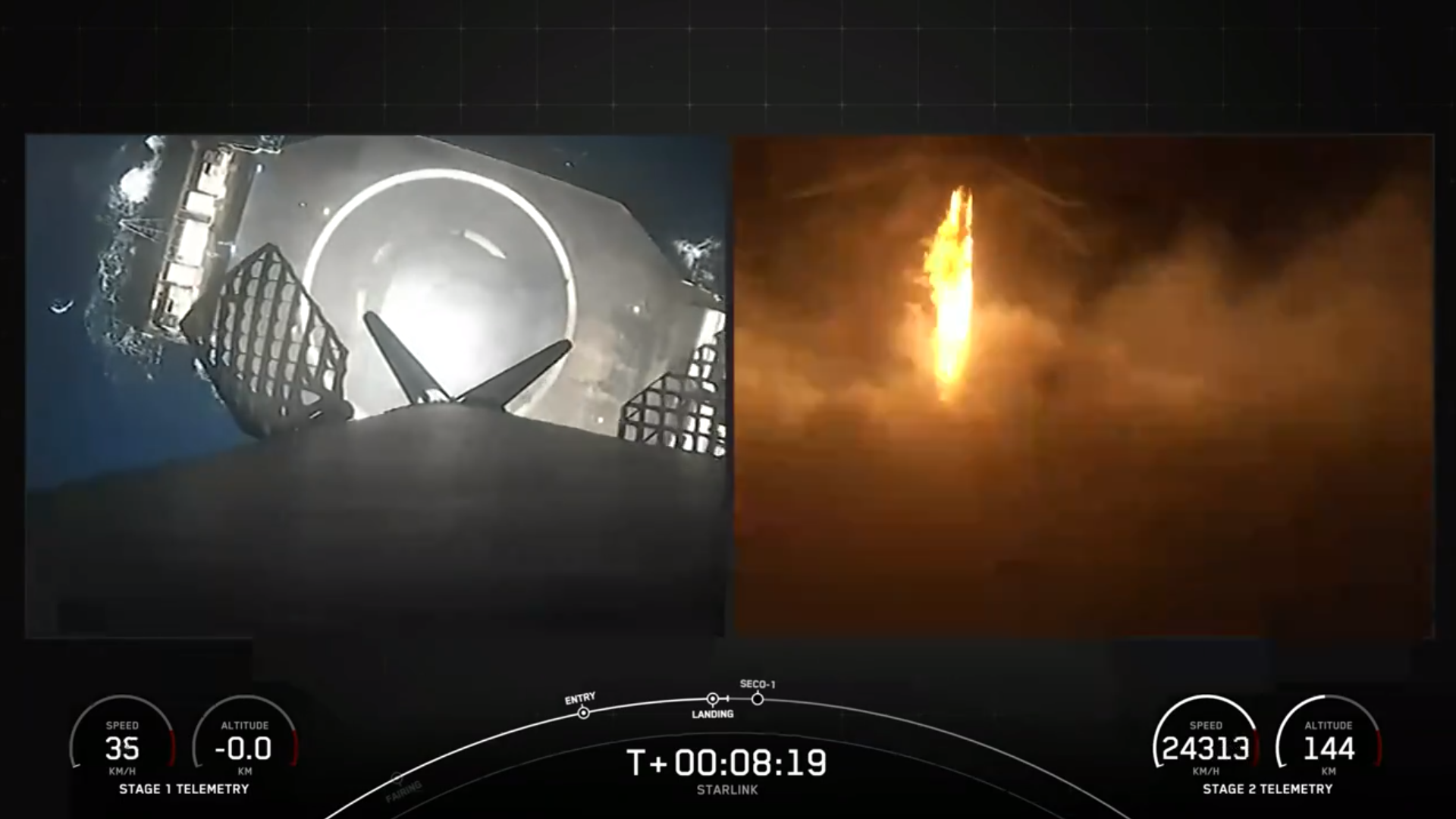
The downsized Starlink “V2 Mini” satellites, first flown last February, boast three to four times greater “usable” bandwidth than earlier Starlink iterations. “V2 Minis include key technologies—such as more powerful phased-array antennas and the use of E-Band for backhaul—which will allow Starlink to provide 4x more capacity per satellite than earlier iterations,” SpaceX explained. “Among other enhancements, V2 Minis are equipped with new argon Hall thrusters for on-orbit maneuvering.”
Florida-based intercity operator Brightline adopted Starlink on its trains in 2023, the first passenger rail service in the world to do so. Additionally, El Salvador’s Ministry of Education has begun integrating Starlink capability into its schools to help close the digital divide between urban and remote rural communities and 50 Rwandan schools are now connected via Starlink’s high-speed internet service.
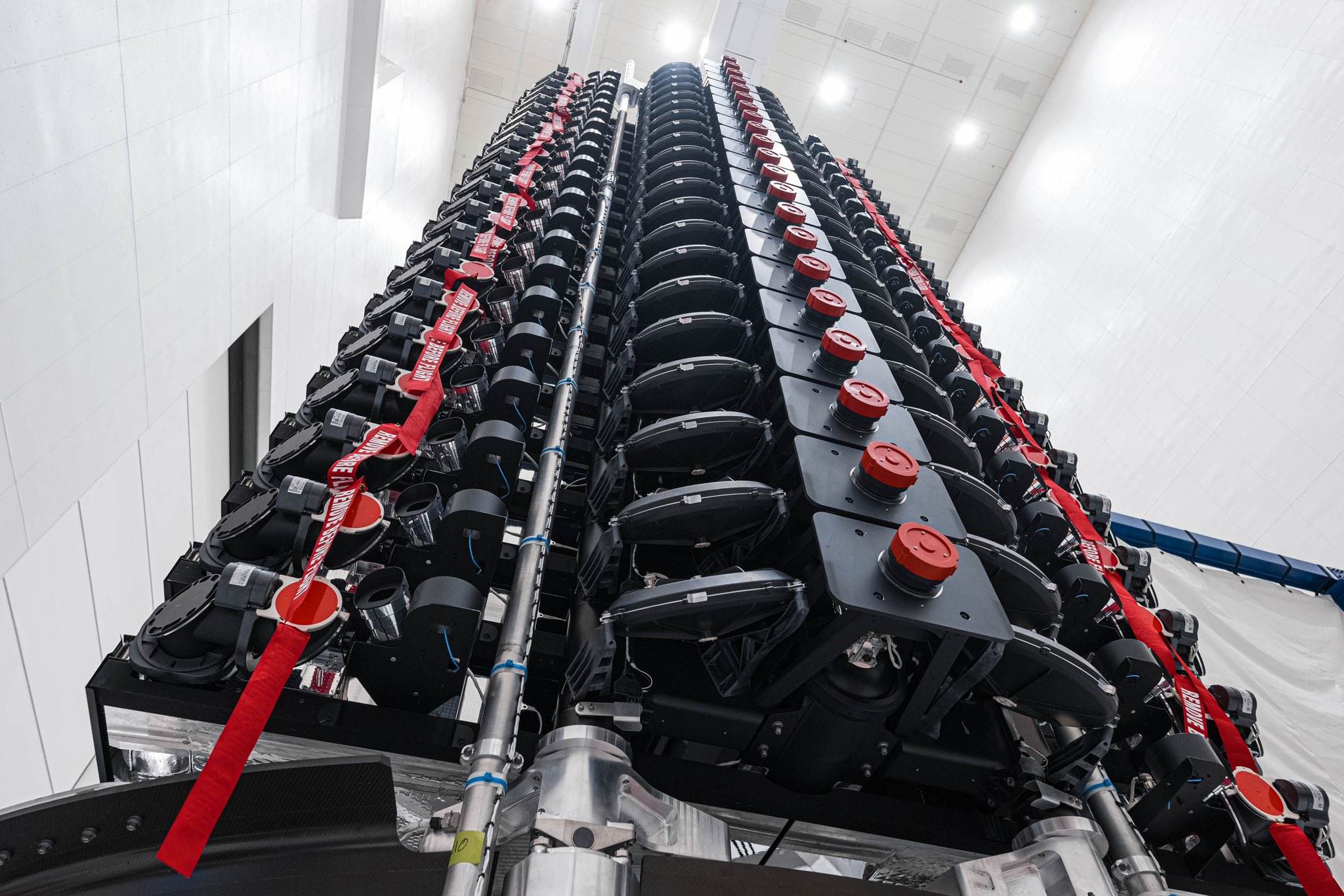
And last month, SpaceX lofted its first six “Direct-to-Cell” Starlinks, which permit mobile network providers to offer “seamless global access to texting, calling and browsing”, whether “on land, lakes or coastal waters”, without changing hardware or firmware. Within six days of that first launch, SpaceX engineers sent and received their first text messages via Direct-to-Cell. Counting last night’s flight, ten Starlink-laden Falcon 9s have flown so far in 2024, delivering over 220 satellites into orbit.
Flying Vandenberg’s seventh mission of the year, and its third in February alone, was B1061, one of relatively few “coast-hopping” Falcon 9s, having launched nine times from the East Coast between November 2020 and June of last year. She was then transported to the West Coast—a distance of more than 2,700 miles (4,300 kilometers), point to point, as the crow flies—for the second half of her career, chalking up an additional ten flights between August 2022 and last night.
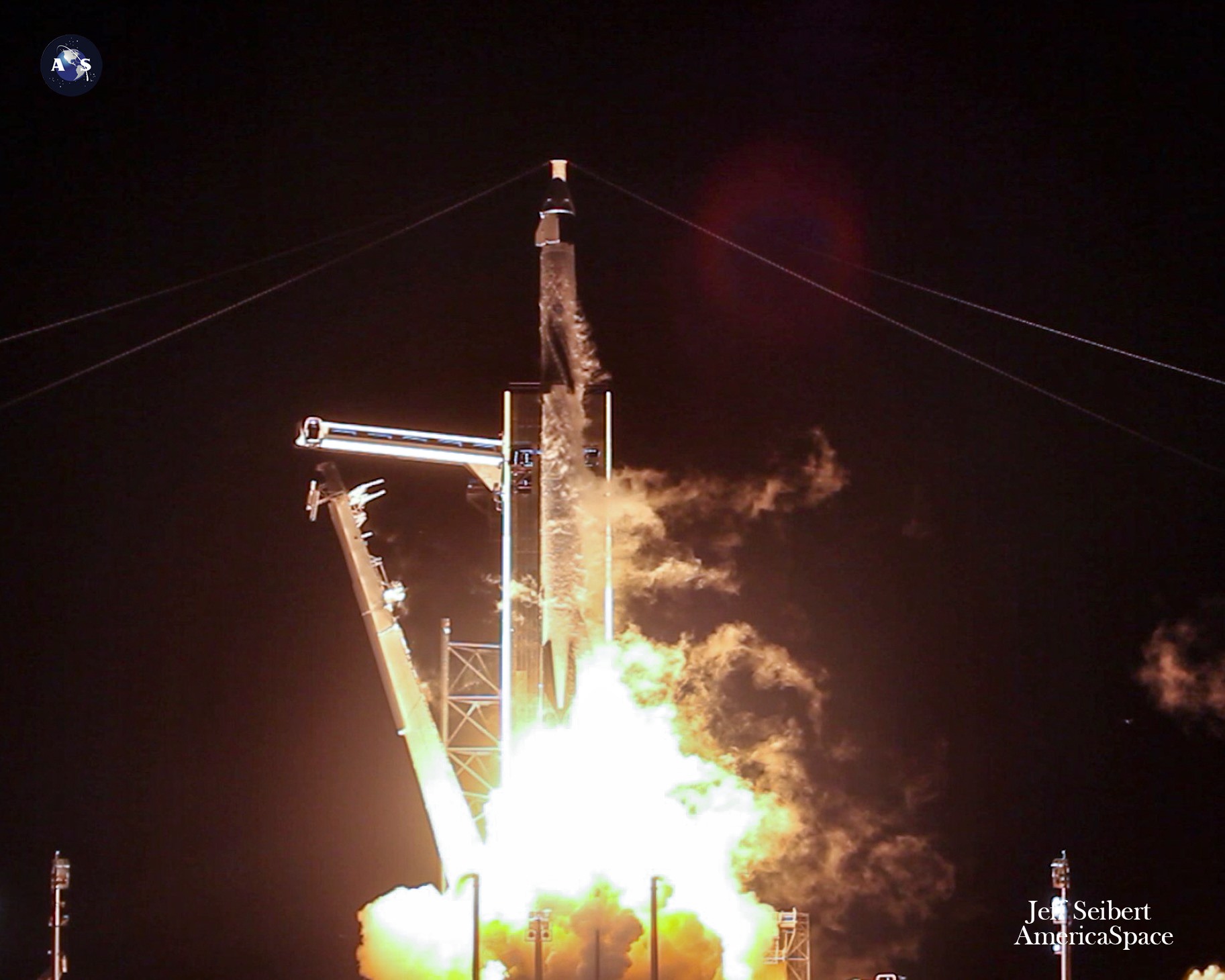
B1061 entered service more than three years ago to lift Dragon Resilience and her Crew-1 complement of NASA astronauts Mike Hopkins, Victor Glover and Shannon Walker, together with Japan’s Soichi Noguchi, for their six-month Expedition 64/65 increment to the International Space Station (ISS). That launch marked the first U.S. human spaceflight to occur in the hours of darkness since the end of the Space Shuttle Program and Glover became the first African-American spacefarer to complete a long-duration mission.
The booster went on to launch NASA’s Shane Kimbrough and Megan McArthur, France’s Thomas Pesquet and Japan’s Aki Hoshide aboard Dragon Endeavour for Crew-2 in April 2021, kicking off their own multi-month ISS increment which concluded after 199 days the following November and spanned Expeditions 65 and 66 to become the longest single mission ever undertaken by a U.S. crewed vehicle. This launch saw B1061 become the first “reused” Falcon 9 ever to carry crew.
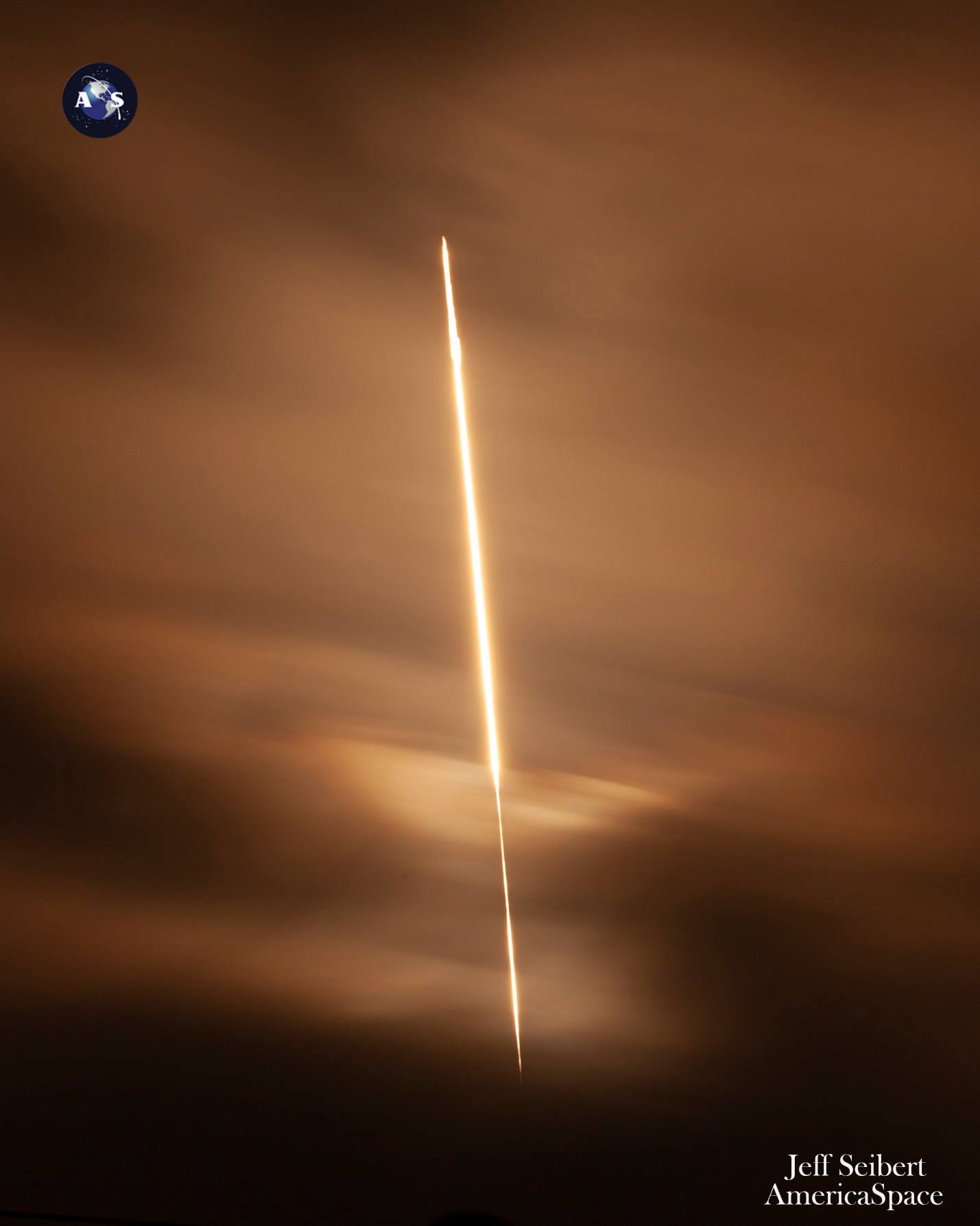
Her human-hauling duties over, B1061 settled into a regular routine as a payload lifter. She launched SiriusXM’s heavyweight SXM-8 broadcasting satellite in June 2021, SpaceX’s CRS-23 Cargo Dragon to the ISS the following August and NASA’s Imaging X-ray Polarimetry Explorer (IXPE) in December 2021.
Six additional missions followed in 2022, as she lifted a pair of Starlink batches in February and August and the Transporter-4 and 5 rideshare “stacks” on April Fool’s Day and late May. This was followed by a Globalstar-2 global mobile communications satellite and a possible payload for an undisclosed U.S. Government customer in June and Israel’s EROS-C3 electro-optical surveillance satellite on the second-to-last day of December.
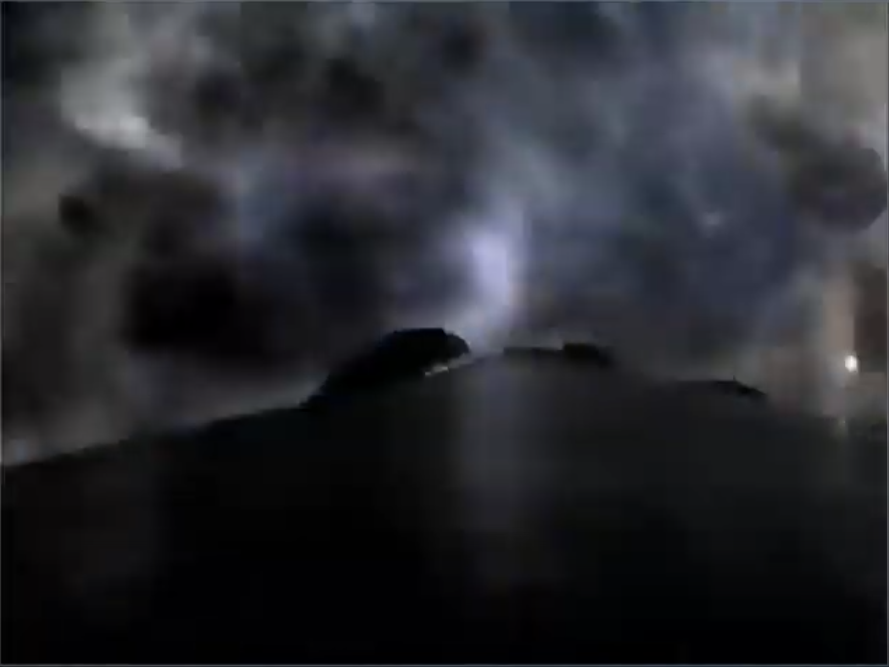
Last year also saw her complete six missions, delivering a further five Starlink payloads and South Korea’s 425 Project Synthetic Aperture Radar (SAR) military satellite into orbit. Although payload masses for several of her flights have gone unannounced by SpaceX, including last night’s mission B1061 has lifted more than 395,000 pounds (179,000 kilograms) into orbit, including two Crew Dragons, one Cargo Dragon, a pair of multi-payload Transporter stacks and more than 300 Starlinks.
In readiness for launch, the West Coast-based Autonomous Spaceport Drone Ship (ASDS), “Of Course I Still Love You”, put to sea out of Port of Long Beach last Tuesday, bound for a recovery position about 400 miles (640 kilometers) offshore in the Pacific Ocean. It has proven a busy winter for OCISLY, which has recovered all seven Vandenberg-launched Falcon 9 cores so far in 2024.
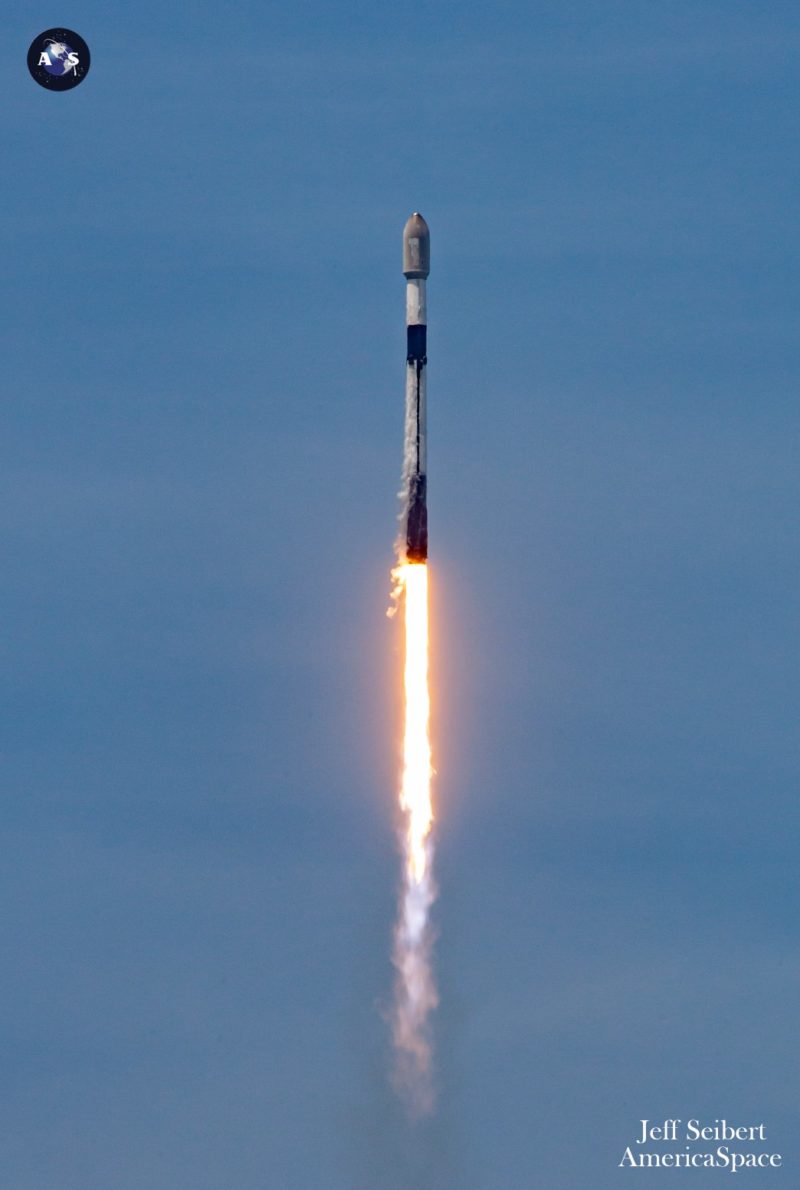
Taking advantage of improved weather on the West Coast, B1061 sprang from SLC-4E at 8:11 p.m. PST Thursday, right on the first attempt of a range of T-0 points extending through 11:44 p.m. PST. The grizzled old booster powered smoothly uphill, her nine Merlin 1D+ engines burning with 1.5 million pounds (680,000 kilograms) of thrust, before shutting down and separating from the Falcon 9 at 2.5 minutes into ascent, returning to an on-point touchdown on the deck of OCISLY.
The turn then came of the rocket’s second stage, which executed a customary six-minute “burn” to deliver the 22 Starlinks into orbit. SpaceX has now conducted 17 Falcon 9 flights inside 2024’s opening eight weeks—averaging a launch every 3.1 days—and has delivered to space ten batches of Starlinks, a NASA-led ocean/climate-monitoring spacecraft, two geostationary-bound communications satellites, a pair of crew-carrying and cargo-carrying flights to the ISS, a highly classified U.S. Space Force mission carrying a group of six payloads on behalf of the Missile Defense Agency (MDA) and the Space Development Agency (SDA) and Intuitive Machines’ IM-1 lunar lander to explore the hinterland of the Moon’s South Pole.




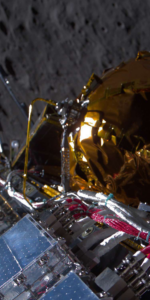
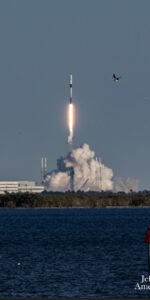
3 Comments
Leave a Reply3 Pings & Trackbacks
Pingback:SpaceX Aims For Sixth, Seventh Launches of March, as Falcon 9, Starship Stand Ready - AmericaSpace
Pingback:SpaceX Launches, Lands Falcon 9, Wraps Up 25th Mission of Year - AmericaSpace
Pingback:SpaceX Aims For Sixth, Seventh Launches of March, as Falcon 9, Starship Stand Ready - SPACERFIT